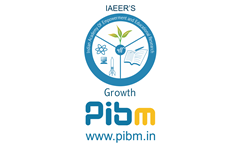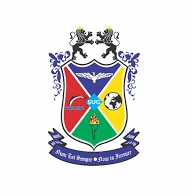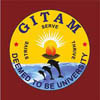
Top Trending Universities










Average Fees :
-
Every year, the NMIMS updates its syllabus and makes it available on its website so that interested applicants can prepare accordingly. It is critical that applicants review the updated NPAT 2022 syllabus so that they are aware of the areas that must be covered.
Students must review the material and use the most recent resources in order to pass the NPAT 2022 exam. The NAPT 2022 will be held at the NMIMS for the following candidates.
This portion will assess the candidates' grammar and comprehension skills. The following subjects will be covered in the questions:
| Construct | Sub-construct | No. of Questions |
| Error Recognition | Recognizing grammatical structure and usage. | 5 |
| Applied Grammar | Using prepositions, determiners, connectives, tenses appropriately. | 8 |
| Vocabulary | Grasping the meaning of underlined words in sentences | 4 |
| Contextual Usage | Using appropriate words in the given context | 4 |
| Sequencing of Ideas | Putting ideas into a logical sequence by putting jumbled sentences in the correct order | 4 |
| Reading Comprehension (3 Passages of 400-500 words with 5 Questions per Passage) | Locating Information, grasping ideas, identifying relationships, interpreting ideas, moods, characteristics of characters, tone of a passage, inferring, getting the central theme, evaluating | 15 |
The non-engineering NPAT 2022 exam will be divided into three sections. Numerical, linguistic (English), and logical thinking are the three parts. The weighting assigned to the subjects should be understood so that interested applicants can prepare for the examination accordingly. The topics for the non-engineering NPAT 2022 examinations are listed below.
Candidates are evaluated in this area based on their numerical and mathematical skills. The most common questions from this section are presented below.
| NPAT 2022Numerical and Quantitative Analysis Syllabus | |
|---|---|
| Construct | Sub-construct |
| Number System | Fractions, Surds and Decimals, Number Series |
| Arithmetic | Percentages, Profit & Loss, Discount, Compound Interest & Annuities, Ratio & Proportions, Time, Work & Distance, 2 D & 3D Figures- Areas & Volumes |
| Algebra | Basic Algebraic Identities, Equations - Linear & Quadratic sequence, and Series (AP, GP) |
| Sets and Functions | Sets, Operation on Sets and their applications using Venn Diagrams, functions |
| Elementary Statistics & Probability | Mean, Mode, and Median, Measures of Dispersion |
| Trigonometry | Trigonometric ratios, identities, height, and distances |
The candidates are evaluated in this area based on their English language skills. The various subjects covered in this section are listed below.
| NPAT 2022English Syllabus | |
|---|---|
| Construct | Sub-construct |
| Error Recognition | Recognizing the grammatical structure and usage. |
| Applied Grammar | Using prepositions, determiners, connectives, tenses appropriately. |
| Vocabulary | Grasping the meaning of underlined words in sentences |
| Contextual Usage | Using appropriate words in the given context |
| Sequencing of Ideas | Putting ideas into the logical sequence by putting jumbled sentences in the correct order |
| Reading Comprehension(3 Passages of 400-500 words with 5 Questions per Passage) | Locating Information, grasping ideas, identifying relationships, interpreting ideas, moods, characteristics of characters, the tone of the passage,inferring,getting the central theme, evaluating |
The applicants are evaluated in this section based on their general logical thinking abilities; the most essential themes from this phase are listed below.
| NPAT 2022Logical Reasoning Syllabus | |
|---|---|
| Construct | Sub-construct |
| Critical Thinking | Decision making (take into cognizance various rules/ conditions and take decisions based upon these rules/conditions) problem solving (to analyze the given information and condense all the information in a suitable form and answer the questions asked) |
| Verbal-logical reasoning | Derive conclusions from logical premises or assess the validity of arguments based on the statement of facts |
| Data sufficiency | Judge if the information given is sufficient to answer the question or some additional information is required |
| Numerical Reasoning | Venn Diagram (identify the class-subclass relationship among the given group of items and illustrate it diagrammatically) Mathematical Equalities |
| Data Interpretation | Use the information given in graphs and charts to answer questions |
| Spatial Reasoning | Figure Analogy (choosing the figure from the alternatives that match with relationship specified by a given figural pair) Figure Matching / Classification (notice the common quality in figures to be able to match figures or find the odd one out) Figure Series (discover a pattern in the formation of figures in a sequence to be able to complete the series / identify the missing figures) |
The engineering NPAT 2022 test will be divided into five components. It is critical for applicants to comprehend the numerous subjects covered in each area in order to pass the NPAT 2022 exam. Students will be able to pass the NPAT exam with flying colours if they have the right resources and preparation. The following is the NPAT BTech syllabus for the year 2022.
| Logical Intelligence (20 minutes) | Proficiency in Language (Time: 10 minutes) |
|---|---|
| Critical Thinking: Decision Making- (Take into cognizance various rules/ conditions and take decisions based upon those rules /conditions) Problem Solving: (To analyze the given information and condense all the information in a suitable formand answer the questions asked) |
ErrorRecognition: Recognising grammatical structure and usage. |
| Numerical reasoning: Derive conclusions from logical premises or assess the validity of arguments based on the statement of facts | Applied Grammar: Using prepositions, determiners, connectives, tenses appropriately. |
| Verbal-logical reasoning:Venn Diagram (Identify the class-subclass relationship among the given group of items and illustrate it diagrammatically)Mathematical Equalities | Contextual Usage: Using appropriate words in the given context |
| Data Interpretation: Be able to use the information given in graphs and charts to answer questions | Sequencing of Ideas: Putting ideas into the logical sequence by putting jumbled sentences in the correct order |
| Reading Comprehension: (1 Passage of maximum 350 words with 4 items)Locating Information, grasping ideas, identifying relationships, interpreting ideas, moods, characteristics ofcharacters, the tone of the passage, inferring, getting the central theme, evaluating |
The Design NPAT 2022 test will be divided into three components. While preparing for the exam, students should always check the official updated NPAT 2022 syllabus. Each section's subjects are listed below.
| NPAT 2022Spatial Ability and VisualizationSyllabus | |
|---|---|
| Construct | Subconstruct |
| Principle of perception and visual design | Gestalt Principles of Perception - Proximity, Similarity, Continuation and Closure |
| Huxley-Lester Model: Sight and thought perception | |
| Cognitive Perception involves a myriad of mental processes: interpretation, memory, comparison, salience, association, inventory, analysis, and recognition | |
| Principles of Design: Balance, Proportion, Rhythm, Contrast, Pattern, Movement, Emphasis and Unity | |
| Semiotics (Science of signs and symbols): Iconic, Symbolic, Indexical | |
| Syntax, Semantics, and Pragmatics of Graphics Design | |
| Spatial relationships assessment | Interpretation of Space- Light and Scale (Spatial Properties) |
| Constructivism?visual blueprinting (relating a pattern of shapes or visually arranging series of planes together) | |
| Orthographic representations | |
| Isometric representations | |
| Perspectives | |
| Knowledge of practical and everyday mechanical and scientific concepts | Knowledge of form and material, usability, and emotional impact (day-to-day objects) |
| Basic Mechanics | |
| Concept of Patterns in data | |
| NPAT 2022 Observation and Problem SolvingSyllabus | |
|---|---|
| Construct | Subconstruct |
| Ability to detect concealed properties in ordinary things, people, situations, and events, and thinking critically about them. | Ability to detect complexity/problems related to ease-of-use of modern/day-to-day devices |
| Ability to understand spatial relations among 2D and 3D objects | |
| Applying attention to certain details, analyzing, reasoning, classifying, inferring, and predicting. | Creative Problem Solving Techniques (Preparation, Incubation, Illumination, and Verification) |
| Bottom to top and top to downapproaches seriesof planes together) | |
| Ability to discern subtle differences in visual properties and aesthetic outcomes. | Knowledge of the spatial composition, lighting, Golden Ratio, Rule of Thirds, Balance, Color preference (Hue, Saturation, lightness) |
| Using these to solve problems | Use of fonts as an element for communication or merely font awareness |
| Use of design elements, design and perception principles, spatial properties, cultural preferences, and structured design process | |
| NPAT 2022 General Awareness and Design Syllabus | |
|---|---|
| Construct | Subconstruct |
| General awareness of environmental factors such as climate, population, water, vegetation, pollution, weather, natural resources, etc., and the implications on the design of products, images, infrastructure, and environment. | Design for Environment to achieve sustainability - Green Design |
| Process changes and Product changes ( focus on intangible products) | |
| Awareness of social and cultural connection with the design, history of the designed artifact, and socially responsible and environmentally sustainable design responses. | Designing for social and cultural sustainability - Inclusive Design |
| Principles of Inclusive design: Responsive, Flexible, Convenient, Accommodating, Welcoming and Realistic | |
| Visual culture - Culture expressed in visual images. | |
| Renowned Historical Artists and their paintings, sculptures. | |
The level of competition has increased as the number of interested applicants registering for the NPAT tests has increased year after year, thus students must approach the NPAT 2022 examination in a well-planned manner in order to increase their chances of passing the exam. The following are some key points to consider. Revise the concepts on a regular basis.
